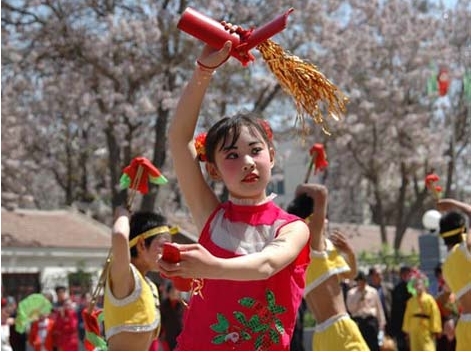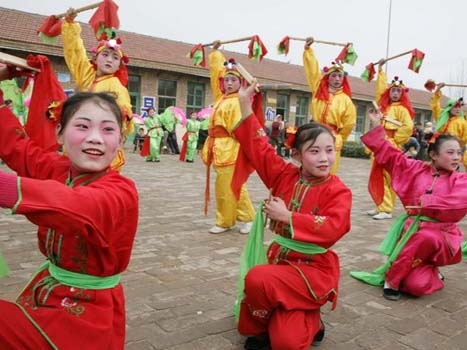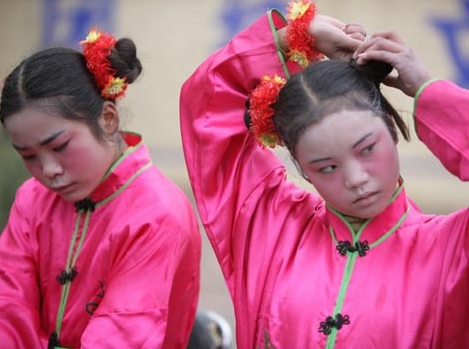
Laozi is very well received by the Nanpi natives since it was created by themselves. According to legend, it has a history of more than 150 years. Laozi of Mei School in Yangbazhuang began to perform in the 8th year of Emperor Yongzheng in the Qing Dynasty (1730). In the period of the end of the Qing Dynasty and the beginning of the Republic of China, Laozi got its peak time. At beginning, the form, performers and dress all depend on the figures and plots. As time goes by, today's Laozi has already become the group dancing that is performed by the youth.

The content of Nanpi Laozi mostly expresses the love and life. It often perform during the period of the Spring Festival to express people's joyous feelings of welcoming a new year and celebrating the harvest.

The roles of Nanpi Laozi are "whip", "board" and "pan". The "whip" is man's movement, while the "board" and "pan" are woman's. Laozi also divides into the civil one and military one. The civil one is also called "Xiao Fengliu". When it is performed, people sing and dance with the continuous folk songs that are more than 30 pieces. And the most used are Flying a Kite and Jasmine etc. The "whip", "board" and "pan" perform in turn and sometimes only the "pan", which is more natural. The military one developed from the civil one and is also called "Strong Wind Yangko", which is perform by "whip" and "board". Because Nanpi Laozi adopts the features of folks martial arts and operas, it is enthusiastic, high, joyous when it performs.
